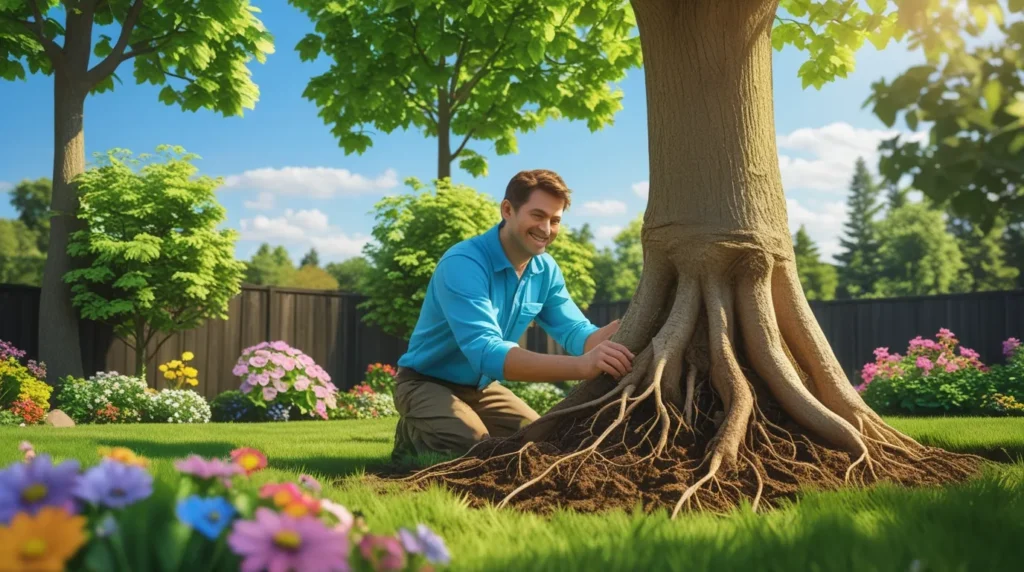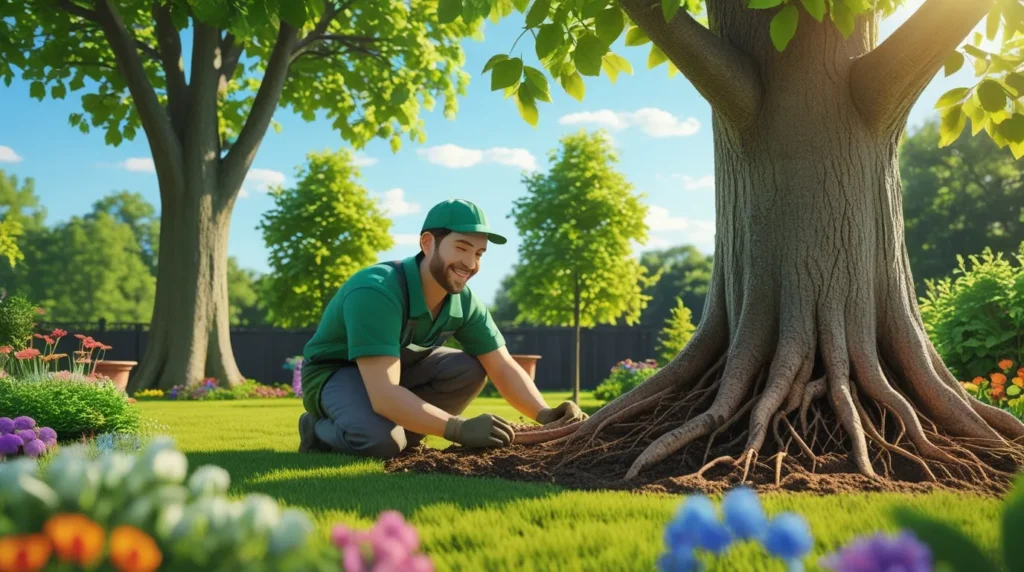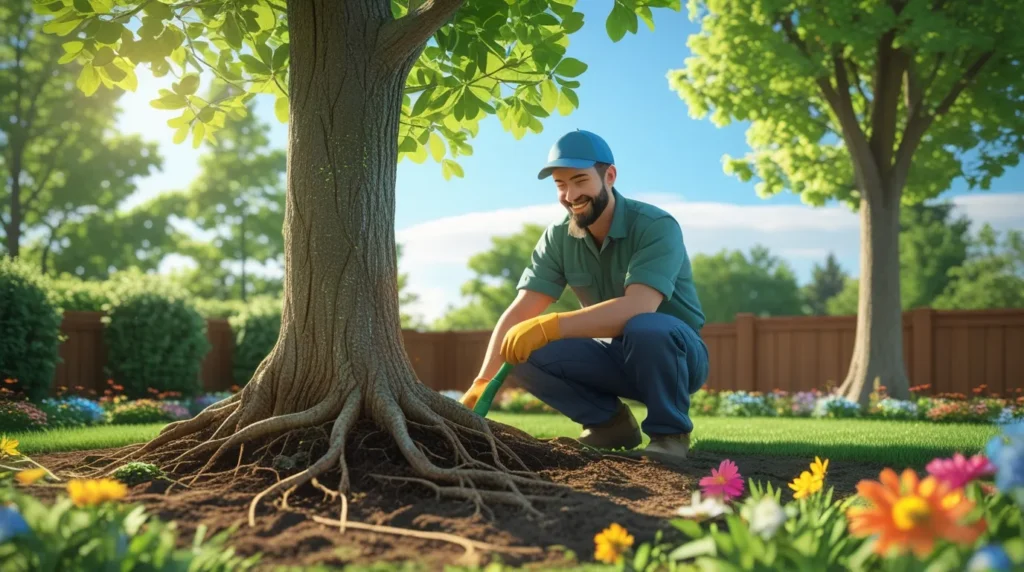Caring for trees is more than just watering and trimming branches. If you want to enjoy their beauty and benefits for years, it’s essential to know how to check health threetrees. Trees are living beings that show warning signs when they’re stressed or unwell. By learning the basics of tree health check, you can spot early problems like leaf discoloration, tree trunk cracks, or even hidden pest infestation.
A healthy tree not only improves your landscape but also boosts air quality and provides shade. With simple inspection steps, you’ll be able to protect your trees and keep them thriving.
Why Tree Health Matters for Homes and Cities
Healthy trees make neighborhoods more beautiful, clean the air, and provide shade. If you learn how to check health threetrees, you can protect your property and enjoy safer surroundings. A weak tree can cause damage during storms, but a strong one will stand tall for years.
In the USA, city planners and homeowners focus on urban tree care because trees reduce heat and pollution. Knowing the right steps for a tree health check not only saves money but also keeps your environment green and safe.
Common Signs of an Unhealthy Tree

Trees show warning signs before they die. Cracks on the trunk, leaf discoloration, or unusual fungal growth are early hints that your tree is in trouble. These symptoms are important to watch closely if you want to save the tree in time.
Another common clue is pest infestation. If insects damage bark or roots, it weakens the tree quickly. Learning how to check health threetrees by spotting such signs early helps you prevent bigger problems later.
Physical, Leaf, and Root Indicators to Watch
You can often diagnose tree problems by looking at the basics. Tree trunk cracks, dry roots, or wilting leaves suggest stress. Roots growing above ground may signal poor soil or drought stress. Checking these parts regularly makes tree care easier.
How to Check Health Threetrees Step by Step

Start by looking at the overall shape of the tree. A healthy tree has even branches and vibrant leaves. Next, inspect the bark for damage or fungal growth. Finally, test the soil moisture, since water stress often causes decay.
You can also gently shake smaller branches. If they snap easily, the wood might be weak inside. This step-by-step healthy tree inspection helps you catch early signs before the issue spreads.
Tools and Techniques for Tree Health Inspection

Simple tools like a soil tester, pruning shears, and a moisture meter help you understand tree health. A flashlight can even reveal hidden pests inside bark cracks.
Many arborists use advanced tree health monitoring tools like resistographs to measure trunk strength. While you may not need such devices at home, knowing about them helps if you hire a professional arborist inspection.
Professional Tree Health Assessment vs. DIY

Doing your own check saves money and keeps you connected to nature. By learning how to check health threetrees, you can handle basic issues quickly. DIY inspections are great for spotting early warning signs.
However, when trees show severe decay or root damage, it’s best to call an expert. A certified arborist tree care service uses special equipment to diagnose tree problems and suggest safe treatments.
Role of Soil and Water in Tree Wellness
The soil around your tree tells a big story. If it’s too dry, roots suffer from drought stress in trees. If it’s too wet, roots may rot, causing long-term damage. Checking soil balance ensures steady growth.
Watering also plays a key role in tree disease prevention. Deep, slow watering encourages stronger root systems. Regularly checking soil health keeps your trees in good condition throughout the year.
Seasonal Checklist for Tree Health Monitoring

Each season brings different challenges. In spring, check for new leaf growth. Summer requires watching for pest infestation and water needs. Autumn is perfect for pruning weak branches, while winter tests the trunk’s strength against cold.
Here’s a simple tree care checklist:
| Season | Tree Care Action |
|---|---|
| Spring | Inspect new leaves, check soil |
| Summer | Watch pests, water deeply |
| Autumn | Prune and fertilize |
| Winter | Protect trunk from frost |
How to Save a Sick or Dying Tree
Don’t give up if your tree looks weak. Often, improving soil, adding mulch, and removing pests revives it. Focus on how to save a dying tree by giving extra care during the recovery phase.
If fungal growth spreads, a fungicide may help. In severe cases, ask an arborist for treatment. With early action, even sick trees can recover and continue to grow strong.
Benefits of Healthy Trees for People and the Environment
Healthy trees lower energy bills by providing shade, clean the air by absorbing carbon, and even boost property value. By learning how to check health threetrees, you support a healthier environment for everyone.
Strong trees also prevent soil erosion and reduce noise pollution in busy cities. They are natural protectors, giving both beauty and function to your community.
Final Tips on How to Check Health Threetrees
Consistency is the secret. Regularly check bark, leaves, roots, and soil. If you act early, trees stay healthy and safe. Remember, tree health isn’t just about appearance, but also about long-term strength.
In short, knowing how to check health threetrees gives you peace of mind. With patience and care, your trees will thrive and reward you with shade, beauty, and fresh air for decades.





Pingback: Which Tree Is Good For Health? Discover Nature’s Healing
Pingback: What Are Three Health Essentials For A Happy Life